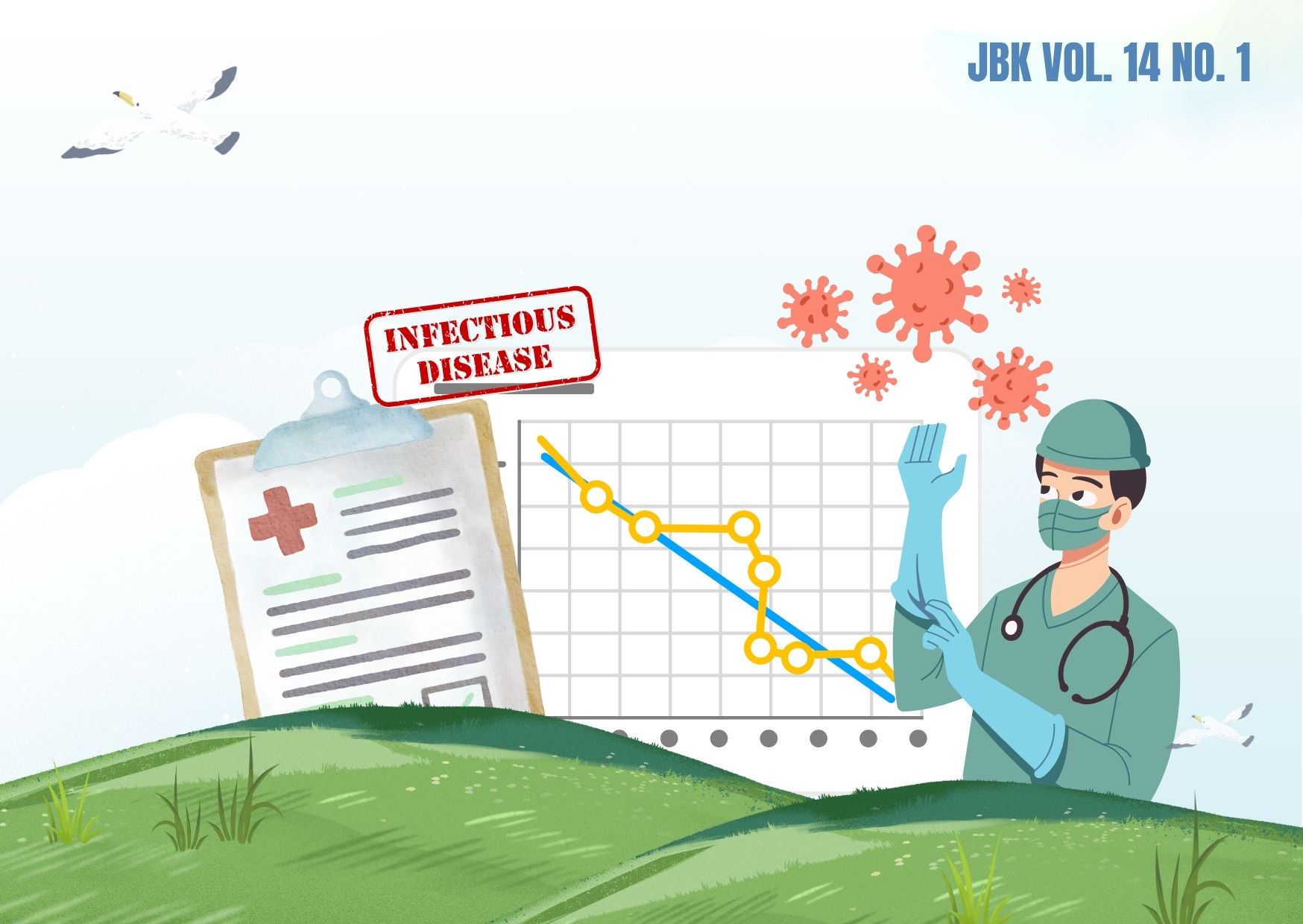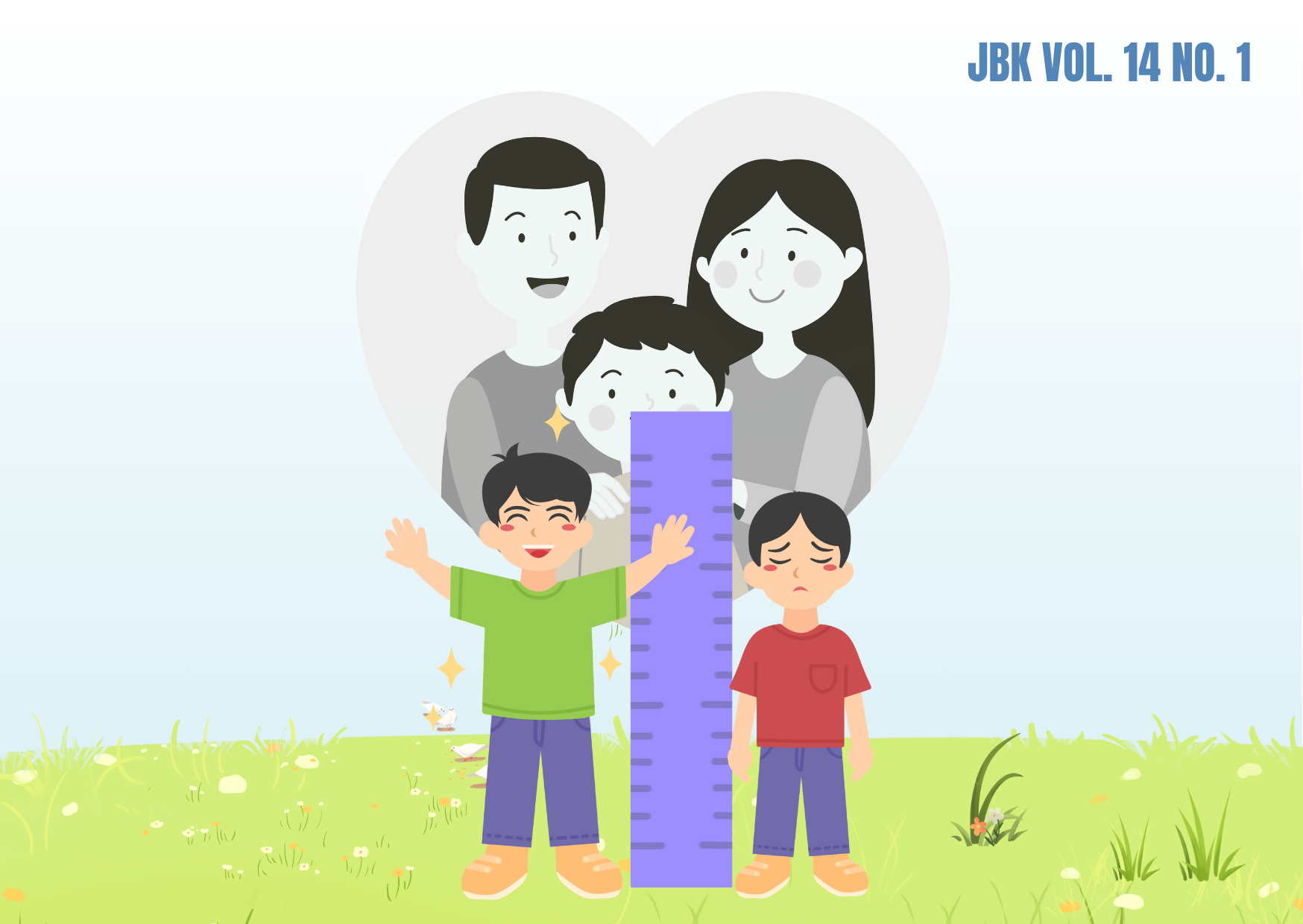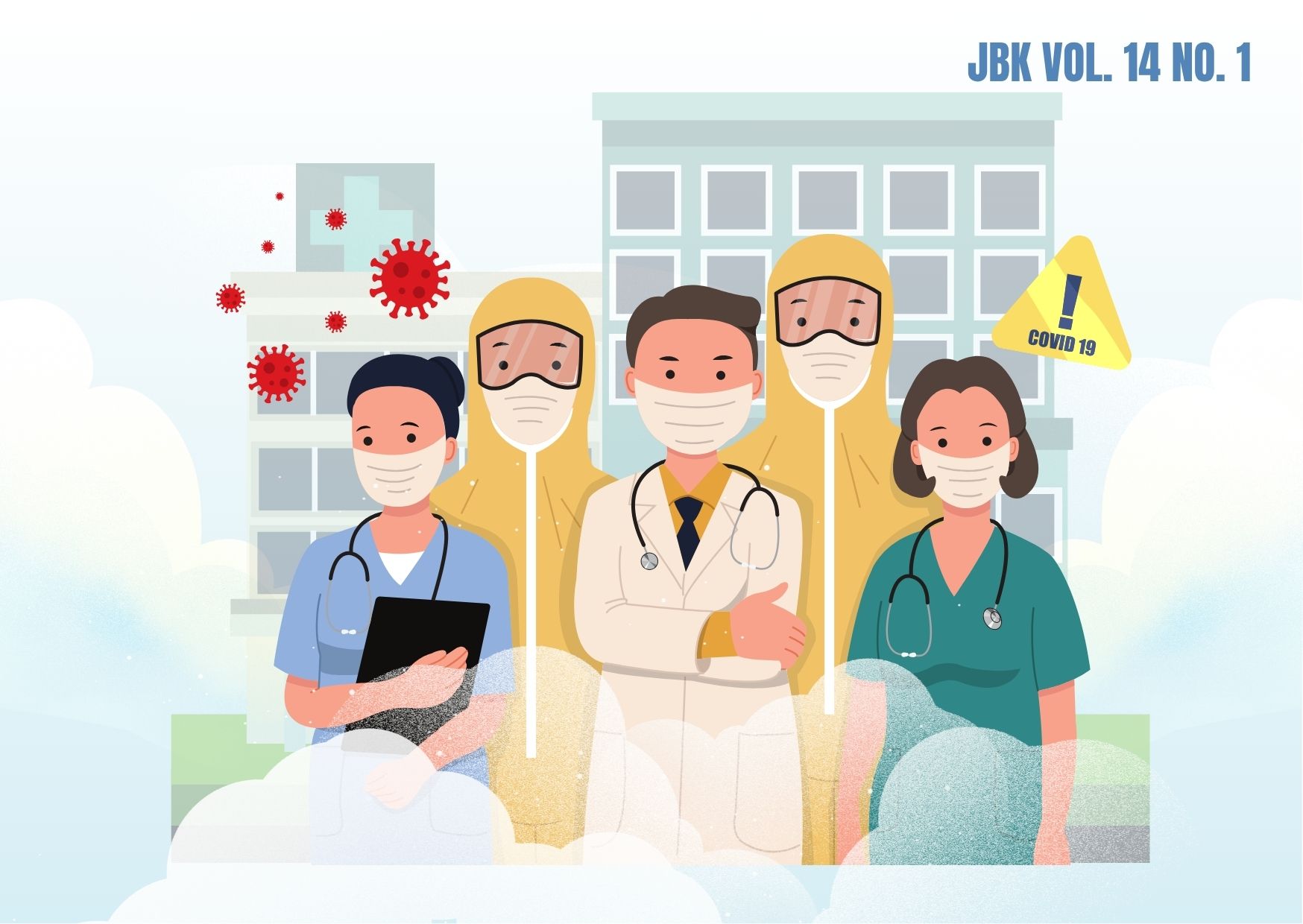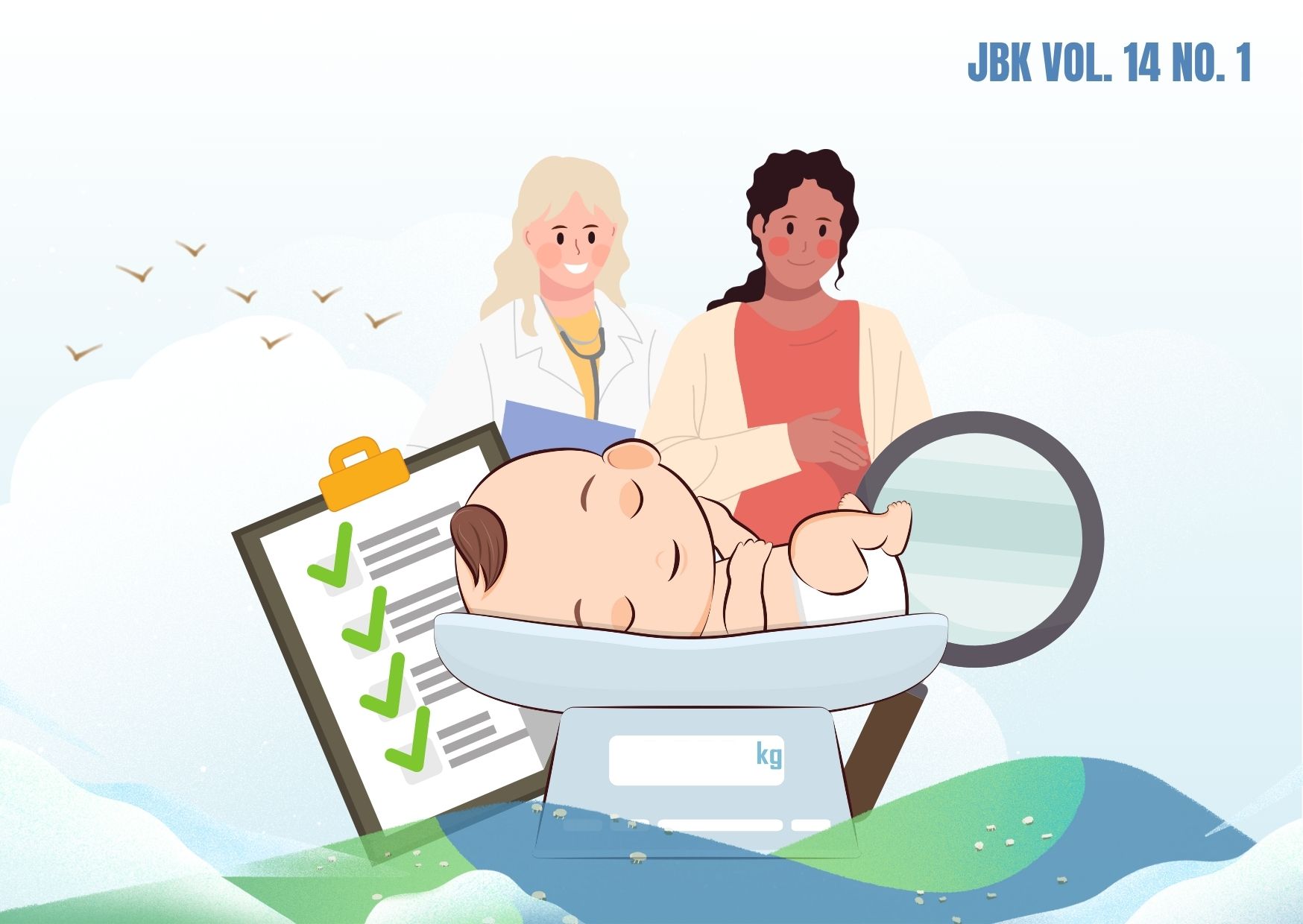UNDERREPORTING IN INFECTIOUS DISEASE CASES: A TIME SERIES REGRESSION-SIR APPROACH

Downloads
Failure to account for the underreporting of infectious disease cases distorts the understanding of infectious disease dynamics. Underreporting creates a false sense of security, allowing the disease to persist or resurge and undermining the effectiveness of public health interventions. This study aims to address underreporting and identify the underlying distribution that best describes the Coronavirus disease 2019 (COVID-19) cases in Nigeria. A Time Series Regression Susceptible-Infected-Recovered (TSIR) model, incorporating Poisson, Gaussian, and Quasi-Poisson distributions with various link functions, was applied to weekly cumulative COVID-19 case data. This dataset spans from February 28, 2020, to July 3, 2022, and includes 110 weekly records. It was sourced from the Nigerian Centre for Disease Control (NCDC) through publicly available weekly epidemiological reports. Microsoft Office Excel 2016 was utilized to collate the database, and the NCDC’s online platform served as the primary data source. The data were divided into two sets: training data from February 28, 2020, to March 20, 2022, comprising 100 cases for modeling TSIR, and testing data from March 27, 2022, to July 3, 2022, encompassing 10 weekly cases for model performance evaluation. These research findings revealed that the reporting rate of COVID-19 data under study is about 35%, indicating underreporting. When accounting for underreporting, the transmission rate was reduced by approximately 0.15. The quasi-Poisson distribution with the log function was the best at describing the distribution of the incidence cases. The study established that the COVID-19 incidence cases in Nigeria are underreported and follow a quasi-Poisson distribution.
Singh RA, Lal R, Kotti RR. Time-discrete SIR model for COVID-19 in Fiji. Epidemiol Infect [Internet]. 2022 Apr 7 [cited 2024 Oct 31];150:e75. Available from: https://doi.org/10.1017/S0950268822000590
Lee TJ, Kakehashi M, Rao ASRS. Network models in epidemiology. Handb Stat [Internet]. 2021;44:235–56. Available from: https://doi.org/10.1016/bs.host.2020.09.002
Cooper I, Mondal A, Antonopoulos CG. A SIR model assumption for the spread of COVID-19 in different communities. Chaos, Solitons & Fractals [Internet]. 2020;139. Available from: https://doi.org/10.1016/j.chaos.2020.110057
Becker AD, Grenfell BT. tsiR: An R package for time-series Susceptible-Infected-Recovered models of epidemics. PLoS One [Internet]. 2017 Sep 28 [cited 2024 Oct 31];12(9):e0185528. Available from: https://doi.org/10.1371/journal.pone.0185528
Martignoni MM, Raulo A, Linkovski O, Kolodny O. SIR+ models: accounting for interaction-dependent disease susceptibility in the planning of public health interventions. Sci Rep [Internet]. 2024 Jun 5 [cited 2024 Nov 2];14(1):12908. Available from: https://doi.org/10.1038/s41598-024-63008-9
Chen J, Lewis B, Marathe A, Marathe M, Swarup S, Vullikanti AKS. Individual and collective behavior in public health epidemiology. In 2017 [cited 2024 Nov 2]. p. 329–65. Available from: https://doi.org/10.1016/bs.host.2017.08.011
Duan Y. Simulations of the COVID-19 epidemic in Nigeria using SIR model. J Phys Conf Ser [Internet]. 2021 Apr 1 [cited 2024 Oct 31];1893(1):012016. Available from: https://iopscience.iop.org/article/10.1088/1742-6596/1893/1/012016
Silva A da. Modeling COVID-19 in Cape Verde Islands - An application of SIR model. Comput Math Biophys [Internet]. 2021;9(1). Available from: https://doi.org/10.1515/cmb-2020-0114
Law KB, Peariasamy KM, Ibrahim HM, Abdullah NH. Modelling infectious diseases with herd immunity in a randomly mixed population. Sci Rep [Internet]. 2021;11(1). Available from: https://doi.org/10.1038/s41598-021-00013-2
Liu T, Bai Y, Du M, Gao Y, Liu Y. Susceptible-Infected-Removed Mathematical Model under Deep Learning in Hospital Infection Control of Novel Coronavirus Pneumonia. J Healthc Eng [Internet]. 2021;(1). Available from: https://doi.org/10.1155/2021/1535046
Bahari MF, Utami R, Rosyida A. SIR Model for the Spread of Tuberculosis in Kudus Regency. World Sci News [Internet]. 2022;163:128–38. Available from: https://worldscientificnews.com/sir-model-for-the-spread-of-tuberculosis-in-kudus-regency/
Gounane S, Barkouch Y, Atlas A, Bendahmane M, Karami F, Meskine D. An adaptive social distancing SIR model for COVID-19 disease spreading and forecasting. Epidemiologic Methods [Internet]. 2021 Mar 3 [cited 2024 Oct 31];10(s1). Available from: https://doi.org/10.1515/em-2020-0044
Espinosa P, Quirola‐Amores P, Teran E. Application of a Susceptible, Infectious, and/or Recovered (SIR) Model to the COVID-19 Pandemic in Ecuador. Frontiers (Boulder) [Internet]. 2020;6. Available from: https://doi.org/10.3389/fams.2020.571544
Tolles J, Luong T. Modeling Epidemics With Compartmental Models. JAMA - J Am Med Assoc [Internet]. 2020;323(24):2515–6. Available from: https://doi.org/10.1001/jama.2020.8420
Akinwumi T, Adegboyegun B. Modelling an Infectious Disease Prediction and control using S-I-R Model. Math Theory [Internet]. 2015;5(4). Available from: https://www.iiste.org/Journals/index.php/MTM/article/view/21581
Rao F. Dynamics Analysis of a Stochastic SIR Epidemic Model. Abstr Appl Anal [Internet]. 2014;2014(1). Available from: https://doi.org/10.1155/2014/356013
Hong HG, Li Y. Estimation of time-varying reproduction numbers underlying epidemiological processes: A new statistical tool for the COVID-19 pandemic. PLoS One [Internet]. 2020;15(7). Available from: https://doi.org/10.1371/journal.pone.0236464
Trejo I, Hengartner NW. A modified Susceptible-Infected-Recovered model for observed under-reported incidence data. PLoS One [Internet]. 2022;17(2). Available from: https://doi.org/10.1371/journal.pone.0263047
Taimoor M, Ali S, Shah I, Muwanika FR. COVID-19 Pandemic Data Modeling in Pakistan Using Time-Series SIR. Comput Math Methods Med [Internet]. 2022;2022(1). Available from: https://doi.org/10.1155/2022/6001876
Katris C. A time series-based statistical approach for outbreak spread forecasting: Application of COVID-19 in Greece. Expert Syst Appl [Internet]. 2021;166. Available from: https://doi.org/10.1016/j.eswa.2020.114077
Ajbar A, Alqahtani RT, Boumaza M. Dynamics of a COVID-19 Model with a Nonlinear Incidence Rate, Quarantine, Media Effects, and Number of Hospital Beds. Symmetry (Basel) [Internet]. 2021;13(6). Available from: https://doi.org/10.3390/sym13060947
Shanbehzadeh M, Orooji A, Kazemi-Arpanahi H. Comparing of Data Mining Techniques for Predicting In-Hospital Mortality Among Patients with COVID-19. J Biostat Epidemiol [Internet]. 2021;7(2). Available from: https://jbe.tums.ac.ir/index.php/jbe/article/view/504
Alenezi MN, Al-Anzi FS, Alabdulrazzaq H, Alhusaini A, Al-Anzi AF. A study on the efficiency of the estimation models of COVID-19. Results Phys [Internet]. 2021;26. Available from: https://doi.org/10.1016/j.rinp.2021.104370
Chen Y, Aldridge T, Ferraro C, Khaw FM. COVID-19 outbreak rates and infection attack rates associated with the workplace: a descriptive epidemiological study. BMJ Open [Internet]. 2022 Jul 18 [cited 2024 Nov 2];12(7):e055643. Available from: doi: https://doi.org/10.1136/bmjopen-2021-055643
Houben RMAC, Maanen K van, Kemp-Symonds JG, Waller AS, Oldruitenborgh-Oosterbaan MMS van, Heesterbeek H. Estimation of the basic reproduction number for Streptococcus equi spp. equi outbreaks by meta-analysis of strangles outbreak reports. Equine Vet J [Internet]. 2022;5(3):50–514. Available from: https://doi.org/10.1111/evj.13865
Alenezi MN, Al-Anzi FS, Alabdulrazzaq H, Alhusaini A, Al-Anzi AF. A study on the efficiency of the estimation models of COVID-19. Results Phys [Internet]. 2021 Jul [cited 2024 Oct 31];26:104370. Available from: https://doi.org/10.1016/j.rinp.2021.104370
A. Iboi E, Sharomi O, N. Ngonghala C, B. Gumel A. Mathematical modeling and analysis of COVID-19 pandemic in Nigeria. Mathematical Biosciences and Engineering [Internet]. 2020 [cited 2024 Oct 31];17(6):7193–221. Available from: https://doi.org/10.3934/mbe.2020369
Moffat I, Akpan E. A Probabilistic application of generalized linear model in discrete-time stochastic series. J Sci Res Rep [Internet]. 2018 Jun 5 [cited 2024 Oct 31];19(3):1–9. Available from: https://doi.org/10.9734/JSRR/2018/40909
Chen H, Haus B, Mercorelli P. Extension of SEIR compartmental models for constructive lyapunov control of COVID-19 and analysis in terms of practical stability. Mathematics [Internet]. 2021 Aug 27 [cited 2024 Oct 31];9(17):2076. Available from: https://doi.org/10.3390/math9172076
Matouk AE. Complex dynamics in susceptible-infected models for COVID-19 with multi-drug resistance. Chaos Solitons Fractals [Internet]. 2020 Nov [cited 2024 Oct 31];140:110257. Available from: https://doi.org/10.1016/j.chaos.2020.110257
Mahayana D, Anwari S, Sulistyo B, Rahman FN, Natanael DP. lyapunov stability analysis of COVID-19 SIR modeling. International Journal on Electrical Engineering and Informatics [Internet]. 2021 Mar 31 [cited 2024 Nov 3];13(1):73–86. Available from: DOI: 10.15676/ijeei.2021.13.1.4
Marshall M, Parker F, Gardner LM. When are predictions useful? A new method for evaluating epidemic forecasts. BMC Global and Public Health [Internet]. 2024 Oct 3[cited 2025 Jun 05] ;2(1):67. Available from: doi:10.1186/s44263-024-00098-7
Held L, Meyer S, Bracher J. Probabilistic forecasting in infectious disease epidemiology: the 13th Armitage lecture. Stat Med [Internet]. 2017 Sep 30 [cited 2025 Jun 05];36(22):3443–60. Available from: doi:10.1002/sim.7363
Kissler SM, Tedijanto C, Goldstein E, Grad YH, Lipsitch M. Projecting the transmission dynamics of SARS-CoV-2 through the postpandemic period. Science (1979) [Internet]. 2020 May 22 [cited 2025 Jun 05];368(6493):860–8. Available from: doi:10.1126/science.abb5793
Camacho A, Kucharski AJ, Funk S, Breman J, Piot P, Edmunds WJ. Potential for large outbreaks of Ebola virus disease. Epidemics [Internet]. 2014 Dec 9 [cited 2025 Jun 05];9:70–8. Available from: doi:10.1016/j.epidem.2014.09.003
’Grenfell B, ’Bjørnstad O, ’Finkenstadt B. Dynamics of Measles Epidemics: Scaling Noise, Determinism, and Predictability with the TSIR Model. Ecol Monogr [Internet]. 2002 [cited 2024 Nov 3];72(2):185–202. Available from: https://doi.org/10.1890/0012-9615(2002)072[0185:DOMESN]2.0.CO;2
Copyright (c) 2025 Jurnal Biometrika dan Kependudukan

This work is licensed under a Creative Commons Attribution-NonCommercial-ShareAlike 4.0 International License.
Copyright©2022 Jurnal Biometrika dan Kependudukan (Journal of Biometrics and Population)
This work is licensed under a Creative Commons Attribution-NonCommercial-ShareAlike 4.0 International License.
1. Copyright of all journal manuscripts is held by the Jurnal Biometrika dan Kependudukan.
2. Formal legal provisions to access digital articles of the electronic journals are subject to the provision of the Creative Commons Attribution-ShareAlike license (CC BY-NC-SA), which means that Jurnal Kesehatan Biometrika dan Kependudukan to keep, transfer media/format, manage in the form of databases, maintain, and publish articles.
3. Published manuscripts both printed and electronic are open access for educational, research, and library purposes. Additionally, the editorial board is not responsible for any violations of copyright law.


































